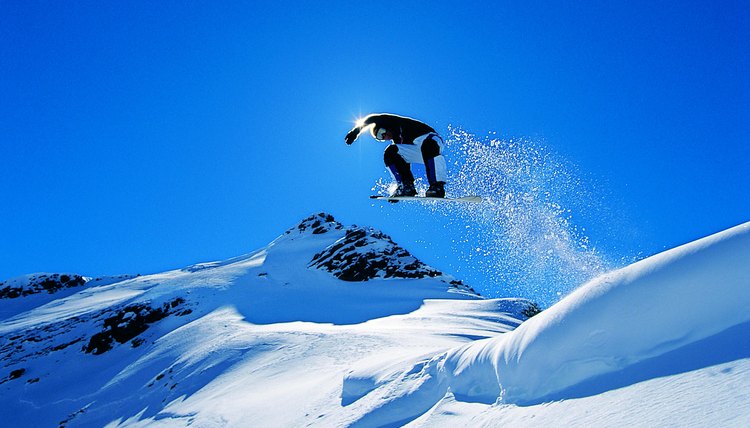What does fact checked mean?
At SportsRec, we strive to deliver objective content that is accurate and up-to-date. Our team periodically reviews articles in order to ensure content quality. The sources cited below consist of evidence from peer-reviewed journals, prominent medical organizations, academic associations, and government data.
The information contained on this site is for informational purposes only, and should not be used as a substitute for the advice of a professional health care provider. Please check with the appropriate physician regarding health questions and concerns. Although we strive to deliver accurate and up-to-date information, no guarantee to that effect is made.
Stress on the Calves While Snowboarding

A lot of your power in snowboarding comes from your legs, and riding all day with your legs in a squat position can put a lot of strain on your calf muscles. A few adjustments to your bindings can ease this constant strain, but it's also important to take the proper precautions to protect your calf muscles from injury.
Stretching Your Calves Before Snowboarding
A simple calf stretch can loosen up your legs before snowboarding and help prevent calf muscle injuries. Stand a few feet from a wall and put your hands on the wall about shoulder-width apart. Move your left leg forward and bend it at the knee, keeping your right leg back with your right heel on the ground. Don't bend at the waist, and keep your hips and back straight. Hold this stretch for 30 seconds, then do the same stretch with your right leg forward. Repeat this stretch for both legs a few times before riding.
Binding Angle
If you feel a lot of strain on your calves while riding, the problem could be the angle of your bindings. The most important part of setting your binding angle is choosing one that doesn't strain your knees or calves. A common binding angle that would put minimal strain on your calves is 15 degrees on the front binding and 0 degrees on the rear binding. This is a good angle to start with, then adjust the bindings in either direction. Comfortable binding angles vary for every person, so choose one that feels best to you and don't be afraid to adjust it often.
Binding Highback Angle or "Forward Lean"
Your binding's highback angle, also known as forward lean, will affect your body posture and the strain on your leg muscles, especially your calves. This is another area that you want to test for comfort. More forward lean, angling your highback forward, will cause your knees to bend farther, giving you a lower, more crouched stance. This stance is great for balance and leverage, but if you're not used to it, it can put a ton of strain on your calves. If you want to increase your forward lean, increase the angle slowly over time to ease your calves into the constant pressure of your new stance.
Strengthening Your Calves
Similar to stretching, doing calf exercises between snowboard sessions can really ease the strain you feel on your calves while out there and will also prevent injury. Calf raises are an easy exercise that you can do in your home multiple times a day. Calf raises are beneficial because they not only strengthen your calves, but they also strengthen your feet and ankles. Stand flat on your feet and push up onto your toes, either on one leg at a time or on both. Do this 20 to 30 times and repeat. You can do this same exercise while holding dumbbells for added strength.
References
Writer Bio
Courtney McCaffrey graduated from the College of Charleston in 2008 with a B.A. in media studies. She has served as an editor for Blooming Twig Books and the MADA Writing Services publishing company. She is now a writer on various outdoor sports such as snowboarding, skiing, surfing and bodysurfing.
